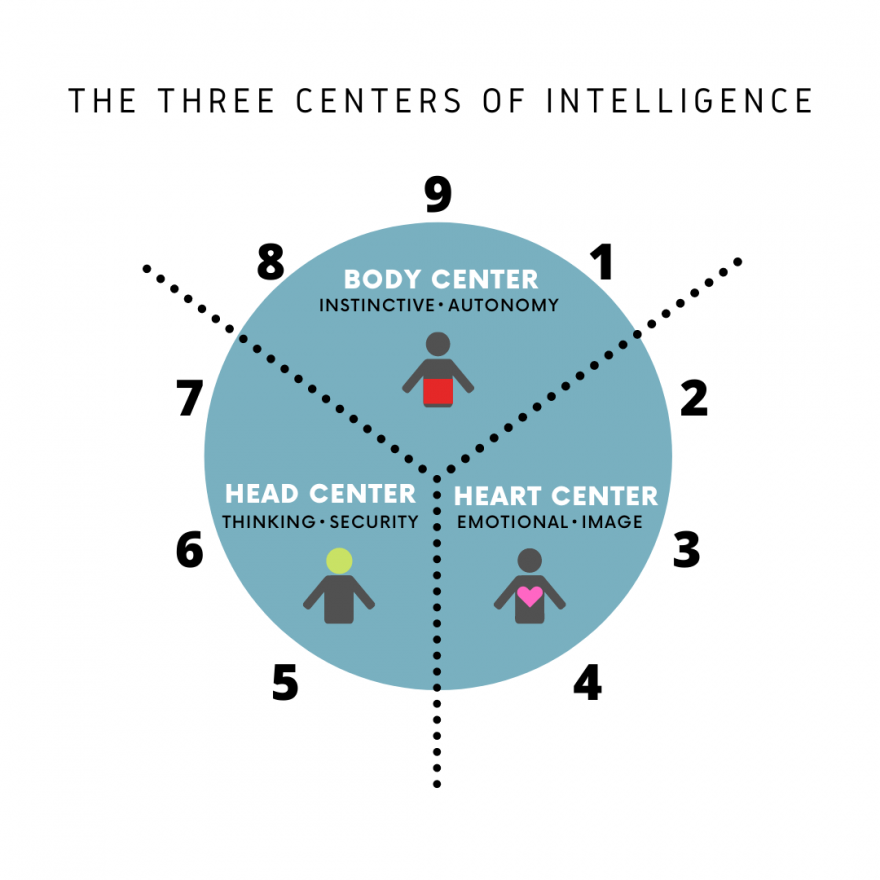The Enneagram, Intro to the Three Centers

The Enneagram, Intro to the Three Centers
The Enneagram is organized around a system of triads, or groups of three. The foundational triad is the Three Centers of Intelligence. Each of these centers contains three of the nine Enneagram types. While each of us has and uses all three centers, we tend to prefer using one of them more predominately based on our Enneagram type.
Each center of intelligence has a true purpose. The Heart Center’s purpose is to bring about connectedness, helping us to relate to others in healthy, compassionate ways. The purpose of the Head Center is to develop a creative vision, using analysis and synthesis to see the world with clarity. The Body Center’s purpose is to generate action to help us harness the inner power of the energy and effort needed to act upon the vision and connectedness that the other two centers provide.
Each of the three types within the centers shares a common underlying feeling and a common primary concern, although how each type experiences the feeling and deals with the concern varies greatly.
The Body Types (8,9,1) share the underlying feeling of anger and concern with autonomy and control of the environment. Each type within the Body Center then handles this energy differently. Those who lead with type eight direct their energy outward against the environment. Type nines direct their energy, both outward and inward, against any “threats.” They may detach from unharmonious environments or “zone out” within their own space to keep anger away, or both. Then those who lead with type one direct their energy inward as a way to keep internal impulses at bay.
The Heart Types (2,3,4) share the underlying feeling of shame or sadness and concern with image. Similar to the Body Center, each type within the Heart Center handles presenting their self-image differently. The type twos present their self-image outwardly towards others. Those who lead with type three present their self-image to both themselves and to others. I like to describe this as type threes tend to “drink their own Kool-Aid.” Then those who lead with type four present their self-image inwardly toward themselves.
In the last triad, the Head Types (5,6,7) share an underlying feeling of fear and concern with security. The Head types are looking to flee from their fears, and each type again does it differently. Those who lead with type five flee inward due to aspects of the outside world. Type sixes flee inward to avoid external threats and outward to avoid internal fears. Those who lead with type seven flee outward due to fearing aspects of their inner world. They tend to move on quickly to the next exciting thing.
All of us have and use all three centers. The growth comes when we can recognize our dominant center and develop the other two centers. This would enable us to be more holistic in our way of interaction in the world.
References: “The Wisdom of the Enneagram” by Don Richard Riso and Russ Hudson, The Narrative Enneagram – www.enneagramworldwide.com, Ginger Lapid-Bogda – www.theenneagraminbusiness.com
